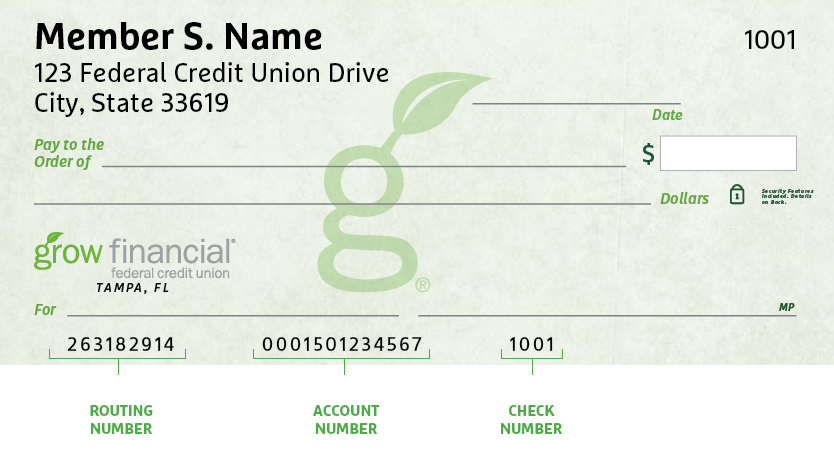- Personal
- Membership
- Membership
- Rates & Fees
- Checking
- Checking
- Personal Loans
- Personal Loans
- Wealth Management
- Investment Services
- Financial Advisors
- Resource Center
- Business

November 26, 2025
Four Financial Goals To Set in 2026
Happy New Year! With a brand new calendar year ahead of us, there’s no better time to do some financial reflecting and goal-setting for the future. Refreshing your commitment to yourself and your finances is a great way to kick off the year. Here are four financial goals to set in 2026.
1. Check in on your monthly budget.
A lot can change from year to year. The budget that worked for you six months ago might not work for you today, but finding time to sit down and reassess can be hard. Because your budget will guide your saving and spending choices, it’s important to make sure it still supports your larger goals.
Examine your income, spending and budgeting strategy. Looking to try something different? Explore a variety of budgeting methods, like the envelope method, the 50/30/20 method or the zero-balance budget, and find one that works well for your current financial needs.
Remember, the best budget is the one you can stick to. Don’t have a budget yet? Get started here.
2. Choose a strategy to tackle high-interest debt.
High-interest debt can be stressful, and tackling it can feel overwhelming. Having a plan — and sticking to it — makes a huge difference. There are many strategies for paying off debt, but two of the most popular are the snowball method and the avalanche method.
With the snowball method, you tackle the smallest balances first and use those small wins to build momentum. With the avalanche method, you focus on paying off loans with the highest interest rates first to minimize the interest you pay overall.
Learn more about these debt-reduction strategies, choose your preferred method and start eliminating debt in 2026.
3. Increase your savings by 1–5%.
You don’t have to wait until you’re 100% debt-free to start saving. In fact, when it comes to saving, time is your biggest asset. Try increasing the amount you’re saving by 5% this year. Remember, everyone starts somewhere. If you can’t raise your savings by 5% yet, start with raising it by just 1%, and increase that amount over time as you’re able. You’ll be surprised by what consistency can achieve.
Want to give your savings an extra leg up? Consider opening a Get Fit Account1 or a Certificate Account so your money can make money by earning a higher interest rate, which means less work for you.
4. Get serious about retirement.
Once you’ve got your saving and budgeting goals in place, you’ll want to shift your focus to longer-term financial plans, like retirement. Sure, retirement might be decades away for you, but the earlier you start, the more you can save.
If you already have a 401(k) through your employer — and especially if they offer a good match — then you’re well on your way. A 401(k) is a great place to start your retirement journey.
If you need to open an account on your own or just want to supplement your 401(k), an Individual Retirement Account (IRA) is one of the smartest options out there.2 Interested? Learn more about the benefits of IRAs here.
We wish you the very best in achieving your financial goals in 2026! For more financial tips and resources, visit our Education page.
Accounts are subject to approval.
1Get Fit Account. The APYs are accurate as of 12/19/2025 and may change without notice after the account is opened. Variable Rate. Fees could reduce earnings. Minimum balance to open is $5. Maximum balance to open is $400. Minimum deposit per month is $20. Maximum deposit per month is $400, withdrawals are permitted. Bonus: When the account reaches $10,000, we will deposit $100 to that account within 90 days and your funds will be transferred to your Basic Savings Account. If more than $400 per month is deposited, the excess will be automatically transferred to your Basic Savings Account. If excess deposits have to be transferred 3 times to the Basic Savings Account, during a 12-month period, the balance of the account will be transferred to the Basic Savings Account. If you fail to deposit $20 per month for 3 months during a 12-month period, the funds in the account will be transferred to the Basic Savings Account.
2Certain restrictions apply. Not all taxpayers are eligible. Consult your tax advisor.
Posted In:
Lost or Stolen Card?
We’re here to help. If your card has been misplaced or stolen, we’ll act quickly to protect your account. You can report a missing card in the following ways:
Online and Mobile Banking
Log in and follow these three easy steps:
- From the menu, select Tools
- Select Card Manager
- Report your card as Lost or Stolen*
By phone or at a Grow store
Call 800.839.6328 to speak to a team member or let us know in person at any Grow store.Notice: Taking these steps will immediately cancel your card to prevent unauthorized transactions. If you find your card later after reporting it lost or stolen, it cannot be reactivated.
*The selected card will be canceled and removed from Manage Cards when it is reported as lost. Once your new card has been issued, it will be available in Manage Cards. The replacement card will have a new card number. Your replacement card will be sent to the mailing address on your account, and you should receive it within 7 to 10 business days.
How to Find Your Routing & Account Numbers
When you make a payment online, by phone or on a mobile device, you may be asked for our routing number and your checking account number. Credit unions and banks use these numbers to identify accounts and make sure money gets where it’s supposed to be. You’ll also need to provide your routing and checking account numbers for:
- Direct deposits
- Electronic checks
- Military allotments
- Wire transfers
Where to Find Your Routing & Checking Account Numbers
Your personal checks include both our routing number and your account number, as shown on the Grow check example below.

Where to Find Your Checking Account Number in Grow Online and Mobile Banking
If you don’t have a physical check on hand, you can also locate your Checking Account Number for Electronic Transactions in Grow Online and Mobile Banking.*
Here’s how to find it:
- In the Grow Mobile Banking app, select your checking account, then tap Show Details in the top right corner.
- In Grow Online Banking, select your checking account, then click Account Details.
Don’t have a Grow check or Online Banking? No worries.
Visit any Grow store or call us and ask for a Direct Deposit Form. It lists both your routing number and checking account number.
Making a Loan Payment
When it comes to making payments, we try to make it as painless as possible to pay your loan every month. We have several different ways to pay, including convenient online options.
Pay Online
You have two ways to pay online by transferring funds from another bank or credit union.
- Grow Online Banking (Preferred payment method for any loan)
This is the simplest way to pay your loan. You can make one-time payments or set up automatic recurring payments in Grow Online Banking. Once you log in, select “Transfer/Payments” from the menu. If you’re not enrolled in Grow Online Banking yet, you can set up your account in just a few minutes.
Log In
- Debit Card or ACH (Available for auto, personal loans and HELOCs)
Note: ACH and debit card payments are not available for credit cards or most mortgages, except HELOCs.
We accept ACH payments with no additional fees, consumer Mastercard® and Visa® debit cards with a convenience fee of $4.95, or commercial Mastercard® and Visa® debit cards with a convenience fee of 2.95% of the payment amount. To get started with an online ACH or debit card payment, select Pay Now below.
Pay Now
Pay by Mail
You can also pay any Grow loan by check through the mail. Please remember to include your account number and Grow loan number on the check. (For credit card payments, please do not write your 16-digit credit card number on the check, which can cause a delay in processing the payment.)
Address for auto, credit card, personal loan and HELOC payments:
Grow Financial Federal Credit Union
P.O. Box 75466
Chicago, IL 60675-5466Address for personal first or second mortgages and home equity payments:
Grow Financial Federal Credit Union
P.O. Box 11733
Newark, NJ 07101-4733You Are About To Leave GrowFinancial.org
At certain places on this site, there are links to other websites. Grow Financial Federal Credit Union does not endorse, approve, represent, certify or control those external sites. The credit union does not guarantee the accuracy, completeness, efficacy, timeliness or accurate sequencing of the information contained on them. You will not be represented by Grow Financial Federal Credit Union if you enter into a transaction. Privacy and security policies may differ from those practiced by the credit union. Click CONTINUE if you wish to proceed.
